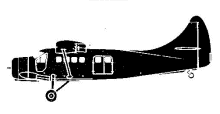Incident Overview

Description
The Otter was on a diamond drill move from the Pelly Crossing, YT, Canada to a site 45 miles to the east. On board was 2,300 pounds of drill equipment, the pilot and one passenger. The aircraft?s weight with this load and fuel was just under the maximum authorized weight of 8,000 pounds. The Pelly Crossing Airport had a three thousand foot east/west gravel runway, at an elevation of 1,870 feet in mountainous terrain. The pilot departed runway 07 using a reduced power setting and upon becoming airborne he pumped the flaps to the full-up position. The aircraft began to settle towards the trees off the end of the strip. The pilot applied full power and as the aircraft began to settle into the trees closed the throttle. The Otter descended into the trees, burst into flames and was destroyed by a post-impact fire. The pilot was able to egress the aircraft and helped the passenger out. Both received serious burns and other injuries. The TSB determined that the use of partial power for take-off and the retraction of the flaps prior to reaching a safe altitude and airspeed caused the aircraft to lose altitude and contact the trees during the climb out.
Source of Information
http://www.dhc-3archive.com/DHC-3_408.htmlhttp://www.dhc-3archive.com/DHC-3_408.htmlPrimary Cause
Improper use of power and flaps during take-off and climb-out, leading to loss of altitude and contact with trees.Improper use of power and flaps during take-off and climb-out, leading to loss of altitude and contact with trees.Share on:





